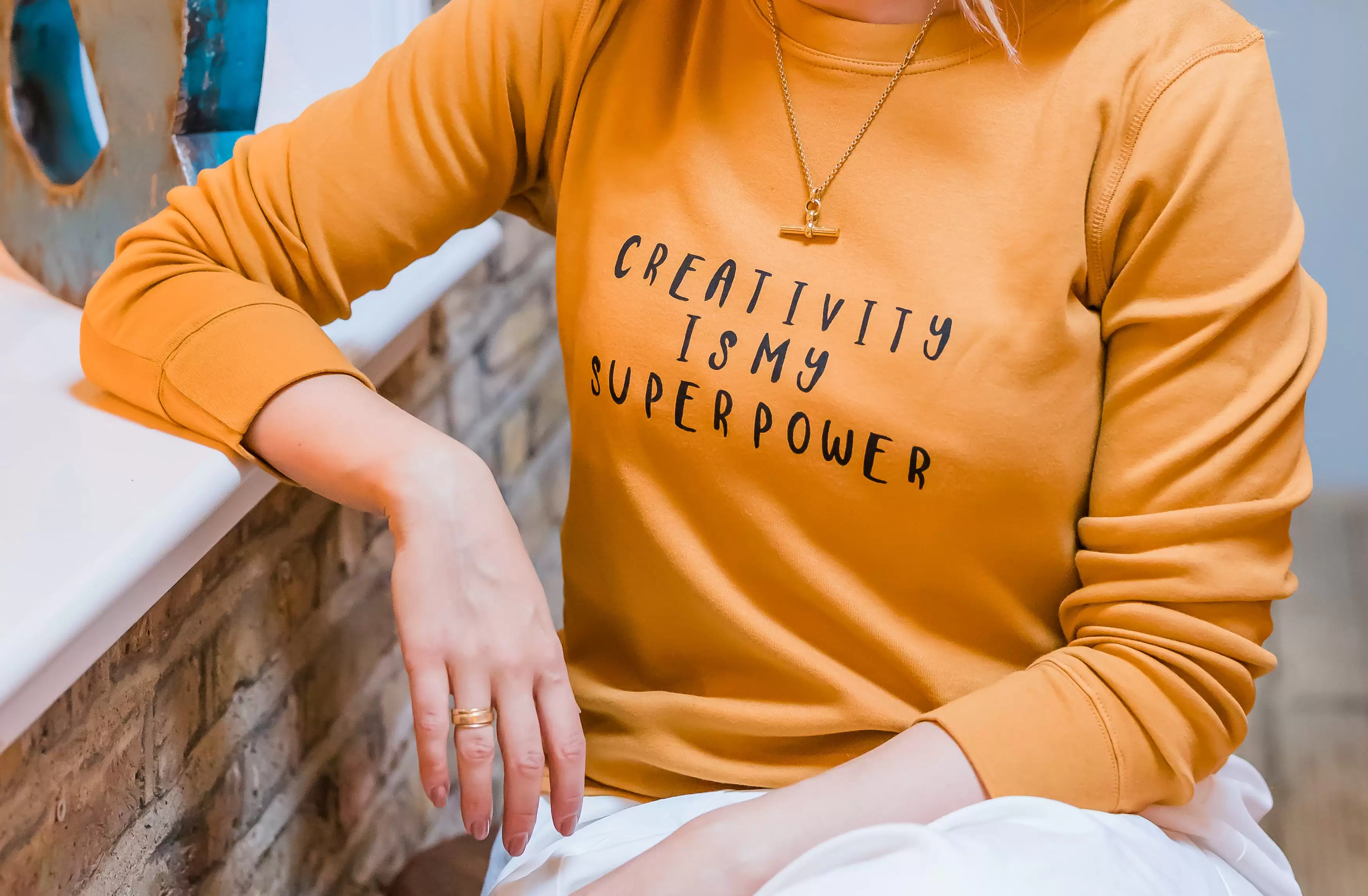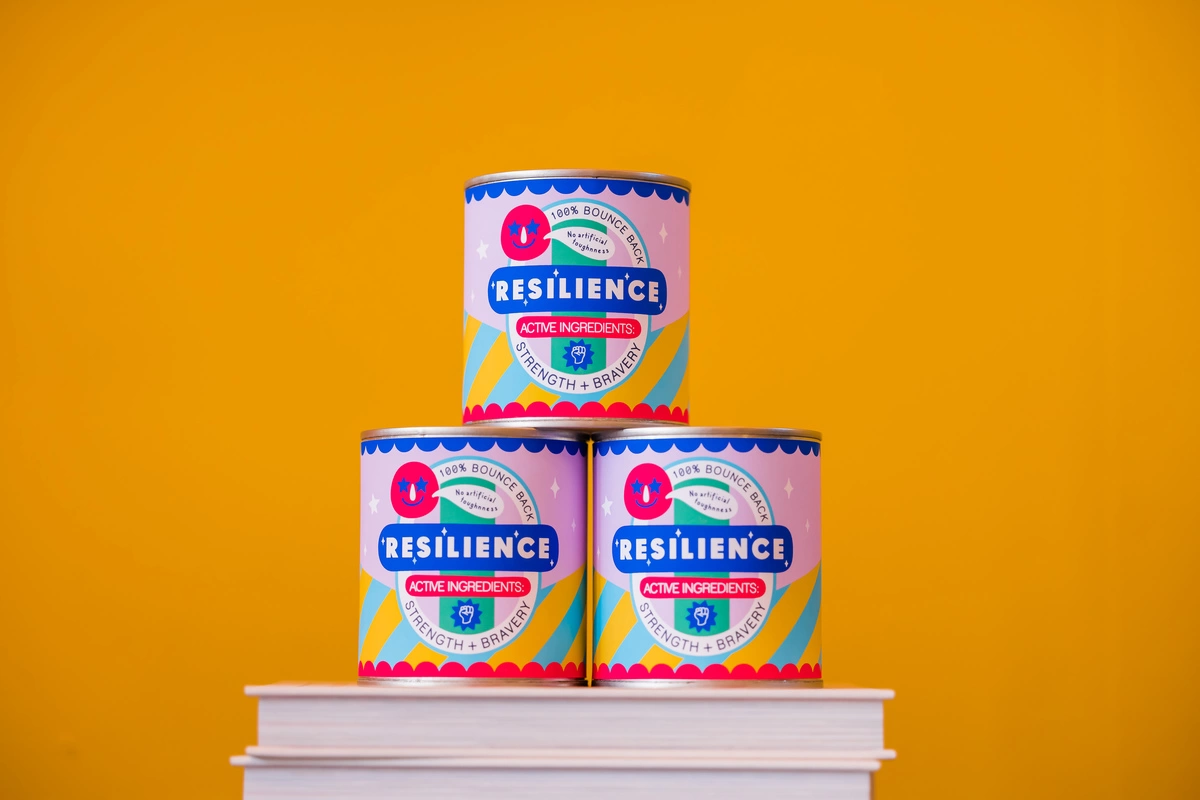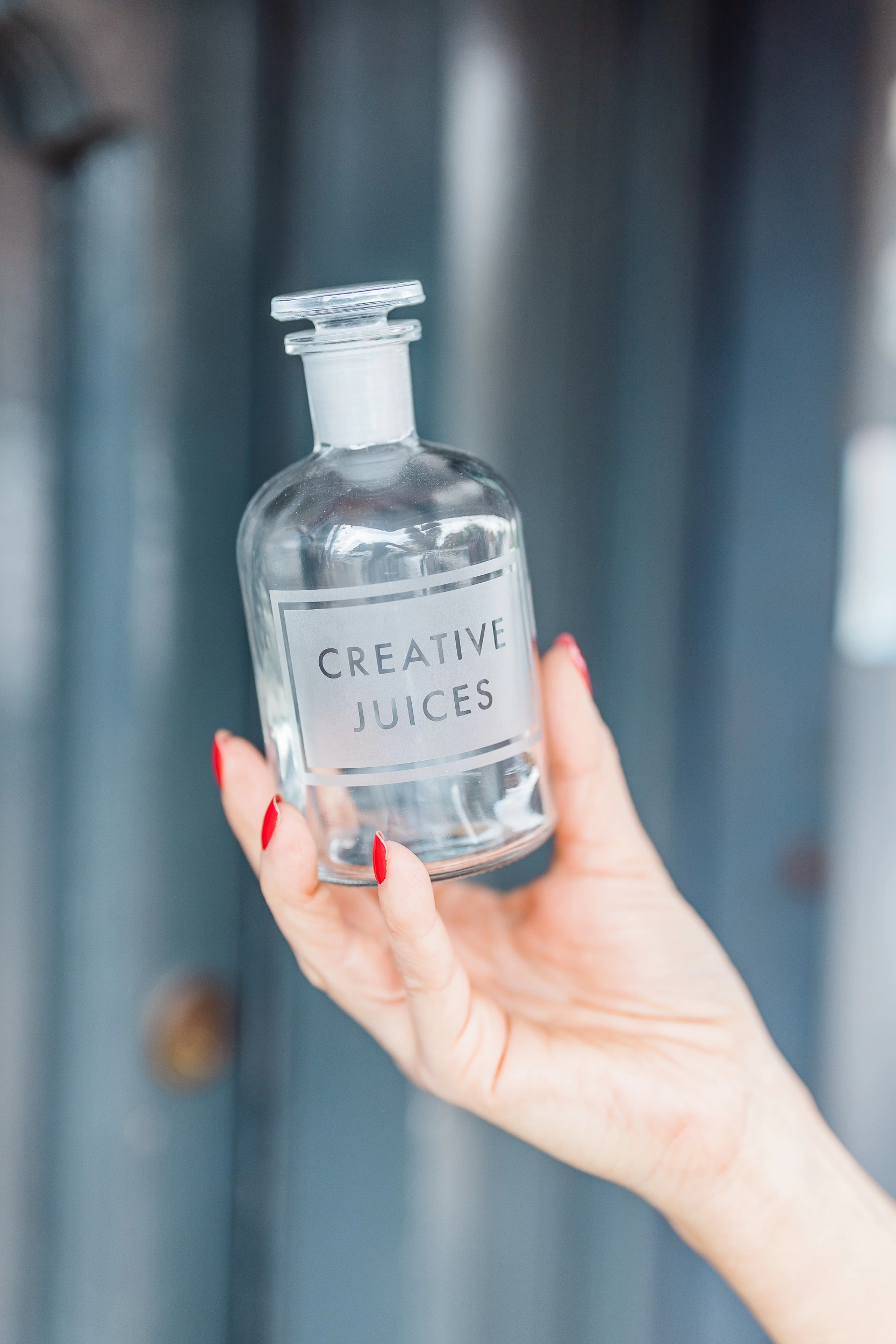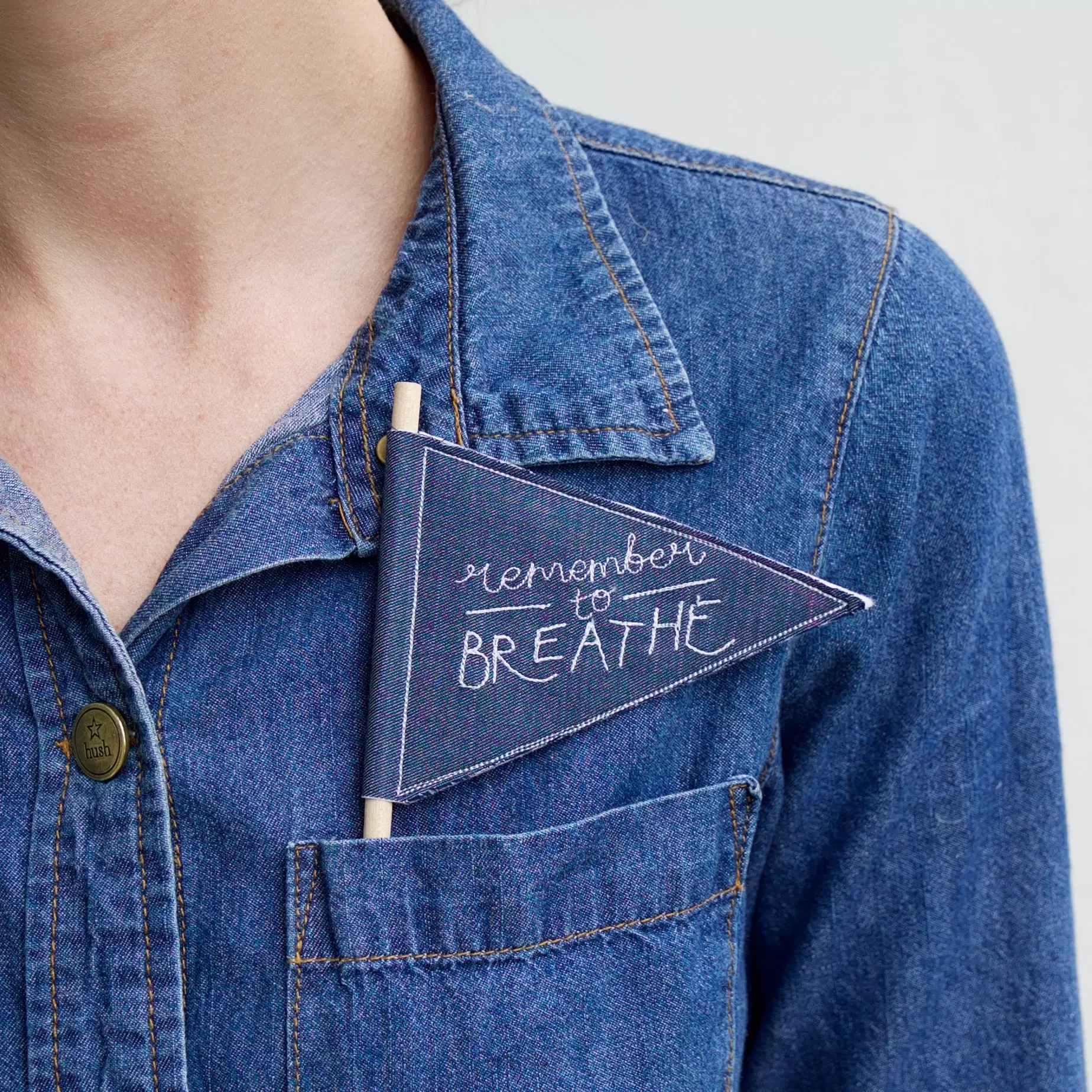Want 10% off your order? Join Club Holly & Co

How to stay creative and resourceful under pressure
Mental Wellbeing
With Kate Downey-Evans, expert business psychologist
UPDATED 4TH SEPTEMBER 2023
So how do you stay creative under pressure when you’re trying to run a small business, raise a family or generally deal with life, and also need to come up with brilliantly innovative ideas at the same time too? Read Kate Downey-Evans expert advice…

Ways to stay creative: top tips for unblocking creativity
The nature of running a small business is that there will be periods of uncertainty and situations in which we have little or no control. Of course, the past few years have only amplified this. Yet, if creativity is core to our business’ success, how do we stay grounded in that rather than becoming paralysed by fear?
Our resident expert — business psychologist and coach Kate Downey-Evans from The Green Door Project — talks us through the neuroscience (how the brain and nervous system interact) behind this, to help us understand how we can interrupt the cycle before it spirals.
Firstly, it’s important to acknowledge that creativity is not just your USP (Unique Selling Point), it’s your superpower. Like all superpowers, it needs protecting from kryptonite-like energy-sappers that halt creativity. However, if you have been exposed and your imagination has been wiped, then fear not. Kate shares some pointers on how to get it back…
How to be more creative, and more resilient to stress
Stress is the number one culprit when it comes to blocking creativity. But stress is inevitable — so how do we learn to cope with it? With resilience.
What is resilience?
Resilience is our ability to adapt and recover from whatever life throws at us. Kate says, “I like to think of it as our inner elasticity — how flexible and adaptable can we be whilst maintaining the strength not to break? What’s our bounce-backability? How can we pivot? How can we be really creative to manage change?”
Why is our natural stress response often disproportionate to what we’re facing?
Kate says it’s because our brain and body have a primitive response, often referred to as ‘fight or flight’, that switches off the prefrontal cortex when it detects a threat. This is the part of the brain that offers the resourcefulness that we actually need most in those scenarios — the ability to analyse and make decisions.
What happens in fight or flight mode?
Our emotional centre (the amygdala) directs our energy to our muscles, telling the body to pump blood to them in anticipation of having to physically defend ourselves or run. It’s a response that made sense when we were hunter-gatherers and may have faced a bear while going about our daily business, but the biochemistry hasn’t evolved in the way our everyday lives have.
Firstly, it’s important to acknowledge that creativity is not just your USP (unique selling point), it’s your superpower. Like all superpowers, it needs protecting from kryptonite-like energy-sappers that halt creativity.
How to overcome fear to release creativity
“The good news,” Kate tells us, “Is that our brains are highly plastic, so we can ‘pattern-interrupt’, stopping our natural response to stress and regaining balance. Over time, the more we do this, we start to build new neural pathways through which we learn to deal with stressful situations differently. Lots of people think resilience is a trait — that you either have it or you don’t — but actually, it’s really about nurturing a set of habits and practices to bolster yourself. We can’t change the world around us, but we absolutely can change how we feel about it.”
Pioneering psychologist William James posed the question, “Are you running from the bear because you’re afraid or are you afraid because you’re running from the bear?” This illustrates the fact that once the physical effects of stress start happening (shortness of breath, increased heart rate, tense muscles, dry mouth and so on), it’s a signal for the brain to react emotionally, in fear. Here are some things you can try to prevent this…
Three steps to staying creative under pressure
Follow these three steps next time your mind starts running away with “what ifs” that block your creativity:
1. Notice your triggers to stress and understand them
What tips you into a fight-or-flight state? Is it when you feel you have no time to yourself? Perhaps this makes you start feeling overwhelmed and then the demands increase?
- Try naming what you’re feeling. This reframes it as data you can work with rather than an emotion you have to fear. So, for example, ‘I feel guilt when I don’t spend time with my kids’ or ‘I feel attacked when I receive feedback.’
- Keep a diary of triggers and how they made you feel. You can then refer back and spot patterns.
- Replace the negative voice in your head with a positive one. It might be trying to protect you by preparing for the worst but this can be unhelpful as the worst might not happen. As Mo Gawdat said on his Conversations of Inspiration podcast episode, think, ‘What’s the best thing that could happen instead?’

Lots of people think resilience is a trait — that you either have it or you don’t — but actually, it’s really about nurturing a set of habits and practices to bolster yourself.

2. Practise ‘press pause’ strategies
By looking out for physical responses to stress, you train the brain to notice and reset your neurobiological state. We need to pattern-interrupt more and practise our response to situations so that our brains get used to it, so you could try…
- Stopping and focusing on your breathing
- Stepping away from the computer
- Making a cup of tea or getting some water
It may feel really important that you deal with the perceived crisis at hand, but even if you can take five minutes to try the above, you will start to feel the rational thinking coming back in. If time allows, take 20 minutes out to go for a walk, speak to a friend or do some exercise. That’s the ideal amount of time to let the body reset itself.What can you do to reduce fear and enable creativity? And finally, one last way to reduce fear and enable creativity is to…
3. Re-engage in the moment and avoid catastrophizing
Once you’re re-engaged, you can think more rationally, creatively and resourcefully. You can start to see the choices in front of you, and all of a sudden, a lot more becomes possible. When you have clarity on the problem at hand and how to tackle it, you’re no longer allowing the catastrophizing to snowball and cause unnecessary fear of what the future might bring.
Keep these handy steps nearby and hopefully you’ll find it easier to stop stress in its tracks and get back to what’s important — your business. By pressing pause, you’ll allow the prefrontal cortex to come into play. Don’t forget that this is the place where deep thinking and decision-making happens, where the creative genius lives. As you consciously help that re-connection to happen, you’ll no longer be experiencing tunnel vision and can see all the choices and resources available to you — which is a much better place to be.
We can’t change the world around us, but we absolutely can change how we feel about it.
How to stay creative: key takeaways…
Here are the three main points to remember.
1. Get to know what triggers your stress and avoid it:
Understanding these triggers and keeping stress at bay will remove the blocker and encourage creativity to flow once more.
2. Practise activities that make you stop for a moment:
Taking time out interrupts the usual patterns in your brain so that it has to try something new, and get creative again.
3. Be present in the moment:
This will help you think more rationally and logically, which in turn, will help prompt your imagination from a safe place. Good luck.

Related content
MORE ARTICLES ON MENTAL WELLBEING

8 ways to avoid burnout
Mental Wellbeing

3 quick tips for stress relief
Mental Wellbeing

Self-care tips for small business owners
Mental Wellbeing

Why it pays to hold onto hope
Mental Wellbeing

How do I find my true happiness?
Mental Wellbeing

How do you overcome fear of failure in business?
Mental Wellbeing

Small business networking: find your community
Mental Wellbeing
Be the first to know
Sign up to our emails for brand new small business magic and inspiration. And if you create an account, you’ll also get exclusive product drops, discounts and more from Club Holly & Co, too.
